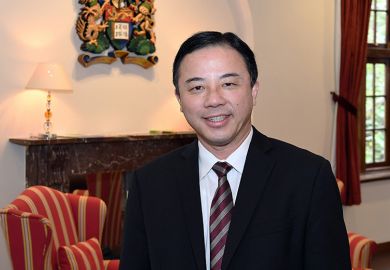Universities have an irreplaceable and unique role in ensuring that their host communities thrive. They also need to recognise that their own success is bound up with the success of the places that gave birth to them.
Over the course of the UK’s year-long UPP Foundation Civic University Commission, chaired by former civil service head Lord Kerslake, it was clear that there is already a significant amount of civic engagement across the higher education sector. Every university that the commission visited and received evidence from was able to give a long list of worthy projects. In every institution, there are people who are passionate about civic engagement and the development of the locality.
But we almost never heard of a strategy that made place-based civic engagement a core part of the university’s mission. This led the commission, in its February report, to recommend the creation of Civic University Agreements (CUA). These will essentially be civic plans, rooted in a robust and shared analysis of local needs and opportunities. Co-signed by local partners – such as local authorities, NHS trusts and further education colleges – they will be a public declaration of a university’s civic priorities and indicate how they will be delivered in partnership with those organisations.
Since February, more than 50 universities have pledged to develop a CUA. Given the brilliant response, the UPP Foundation is today publishing a guide to support their design and implementation. Informed by the commission’s work and a consultation led by Newcastle University and the National Co-ordinating Centre for Public Engagement, it sets out five essential themes.
First, public voice should be at the heart of the agreements. Our polling and focus groups showed that universities tend to be successful at engaging empowered people locally but can find it more difficult to engage with lower socio-economic groups, people who have had fewer educational opportunities and those from disadvantaged places. That might not come as a surprise, but it is really important for universities to seek, understand and act on the views of such groups if they really want to make a transformative impact.
This takes us to the second theme. The university is often one of the largest and most dominant institutions in its area. This strength, harnessed correctly, can be used for significant good. But it is also worth reflecting on the power dynamics of local partnerships and how to foster successful collaborations with organisations that do not have the resources or agency of a university: in particular, small grassroots organisations. We regularly heard that universities slip into the role of doing “to” a community, rather than doing “with” it.
The third theme is about geography. During the commission’s evidence sessions, all expert witnesses were asked how they would describe a civic university to someone on the bus. Every single witness related their answer to the local community. This underlines the fact that “place” is the defining feature of a civic university. However, geographical boundaries are not always easy to define. Some universities prefer softer boundaries, while others prefer clearly defined ones, often linked to the geographies of existing partners and institutional/governance structures. Whichever approach universities take, we’d recommend that they think regionally. It might be appropriate for your CUA to focus on your immediate place, but there may be towns or rural areas in your region to which you are the nearest university and where you can make a tangible impact.
The potential impacts of Brexit, the Augar review and the rising costs of pensions lead us to believe that resources will be constrained in the immediate future. This makes CUAs even more important because they are a tool to strategically prioritise a civic role. So our fourth theme urges universities to think about how they can use their resources effectively to catalyse cultural change within their institution – to support both institutional and bottom-up initiatives.
The fifth theme is about risk. As with any new strategic engagement initiative, poorly designed and executed CUAs could pose risks both to institutional reputations and the civic university movement as a whole. It is key to develop mutually supportive relationships that meet the expectations of partners.
How CUAs are developed will vary and ultimately depend on the context of each university’s local community. But, whatever the approach, there will be a series of activities and steps to ensure that the agreement is fit for purpose.
I hope universities reflect on these five universal themes to ensure that they effectively engage in the right way, with the right people and the right organisations.
Richard Brabner is director of the UPP Foundation.
Register to continue
Why register?
- Registration is free and only takes a moment
- Once registered, you can read 3 articles a month
- Sign up for our newsletter
Subscribe
Or subscribe for unlimited access to:
- Unlimited access to news, views, insights & reviews
- Digital editions
- Digital access to THE’s university and college rankings analysis
Already registered or a current subscriber? Login











